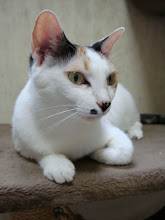• The city of Venice is an example of highly imageable (apparent, legible, or visible) city in this peculiar sense would seem well formed, distinct, and remarkable; it would invite the eye and the ear to greater attention and participation. The sensuous grasp upon such surroundings would not merely be simplified, but also extended and deepened. Such a city would be one that could be apprehended over times as a pattern of high continuity with man y distinctive parts clearly interconnected. The perspective and familiar observer could absorb new sensuous impacts without disruption of his basic image, and each new impact would touch upon many previous elements. He would be well oriented, and he could move easily. p.10
• Since image development is a two-way process between observer and observed, it is possible to strengthen the image either by symbolic devices, by the retraining of the perceiver, or by reshaping one’s surroundings. You can provide the viewer with a symbolic diagram of how the world gits together. p.10
• You may also train the observer. Brown remarks that a maze through which subjects were asked to move blindfolded seemed to them at first to be one unbroken problem. On repetition, parts of the pattern, particularly the beginning and end, became familiar and assume the character of localities. Finally, when they could tread the maze without error, the whole system seemed to have become locality. p.11
• We stare into the jungle and see only the sun light on the green leaves, but a warning noise tells us that an animal is hidden there. The observer then learns to interpret the scene by singling out “give-away” clues and by reweighting previous signals. The camouflaged animal may now be picked up by the reflection of his eyes. Final by repeated experience the entire pattern of perception is changed, and the observer need no longer consciously search for give-aways, or add new data to an old framework. He has achieved an image, which will operate successfully in the new situation, seeming natural and right. Quite suddenly the hidden animal appears among leaves, “as plain as day.” In the same way, we must learn to seen the hidden forms in the vast sprawl of our cities. We are not accustomed to organizing and imaging an artificial environment on such a large scale.; yet our activities are pushing us toward that end. p.10
• In our vast metropolitan areas we do not connect the choir and the bells; like the Sherpa, we see only the sides of Everest and not the mountain. To extend and deepen our perception of the environment would be to continue a long biological and cultural development which has gone from contact senses to the distant senses and from the distant senses to symbolic communications. p.10
• Our environmental image is still a fundamental part of our equipment for living, but for most people it is probably much less vivid and particular way. p.124
• The environmental image has its original function in permitting purposeful mobility. A correct map might mean life or death to a primitive tribe. p.124
• Purposeful movement is accomplished only by an elaborate memorization of sequences of distinctive detail, so closely spaced that the next detail is always within close range of the previous landmark. Locations normally identified by many objects in context may be recognizable only by virtue of some distinctive, separate symbol. One man recognizes a room by a small sign, another knows a street by the tram car numbers. If the symbols are tampered with, the man is lost. The whole situation parallels, in a curious fashion, the way in which we proceed in an unfamiliar city. p.125
• The environmental image may go further, and act as an organizer of activity. p.126
• At other times, distinguishing and patterning the environment may be a basis for the ordering of knowledge. p.126
• The landscape plays a social role as well. The named environment, familiar to all, furnishes material for common memories and symbols, which bind the group together and allow them to communicate with one another. p.126
• The symbolic organization of the landscape may help to assuage fear, to establish an emotionally sage relationship between men and their total environment. p.127
skip to main |
skip to sidebar

Inspiring work and research about design, architecture, art and theory
Search this Blog
About Me

- Huiying Ke
- The intersection between architecture, technology, media, and city have create thoughtful, inspiring, and interesting design. How emerging technologies change the way people perceive urban environment? How can environment be better, connected, responsive to human need, and sustainable through design? All material I found are kept here with respecting to original authors.
Visitors
Live Traffic Map
Live Traffic Feed
2009 All Rights Reserved Tech- Architecture- Design- City.
Blogger Templates created by Deluxe Templates • Wordpress designed by Acosmin
0 comments:
Post a Comment